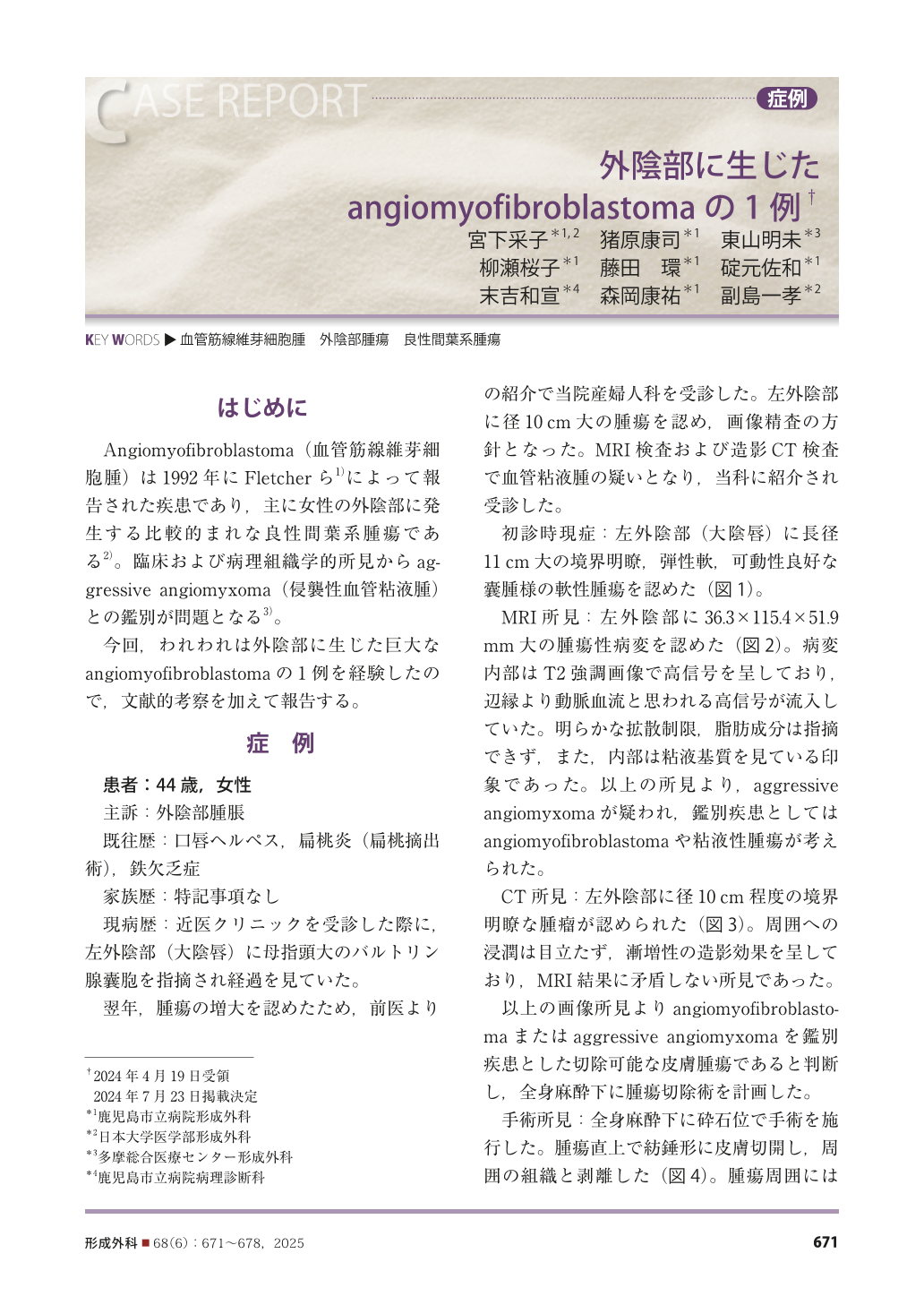Japanese
English
- 有料閲覧
- Abstract 文献概要
- 1ページ目 Look Inside
- 参考文献 Reference
はじめに
Angiomyofibroblastoma(血管筋線維芽細胞腫)は1992年にFletcherら 1)によって報告された疾患であり,主に女性の外陰部に発生する比較的まれな良性間葉系腫瘍である 2)。臨床および病理組織学的所見からaggressive angiomyxoma(侵襲性血管粘液腫)との鑑別が問題となる 3)。
今回,われわれは外陰部に生じた巨大なangiomyofibroblastomaの1例を経験したので,文献的考察を加えて報告する。
Angiomyofibroblastoma is a relatively rare benign mesenchymal tumor that occurs primarily in the vulva. We treated a large 115.4mm angiomyofibroblastoma in the vulva of a 44-year-old woman. Clinically, this lesion is often misdiagnosed as a Bartholinʼs gland cyst. When clinicians observe a vulvar tumor in a middle-aged woman, angiomyofibroblastoma should be considered as one of the differential diagnoses. It is difficult to differentiate angiomyofibroblastoma and aggressive angiomyxoma based on only clinical and histological findings. Angiomyofibroblastoma tumor cells are diagnosed immunohistologically using hematoxylin-eosin, vimentin, desmin, estrogen receptor, progesterone receptor, S-100 protein, and smooth muscle actin (SMA) staining and can be differentiated from aggressive angiomyxoma (which shows spindle-shaped or star-shaped tumor cells) by its more round tumor cells. The treatment for an angiomyofibroblastoma is simple resection, but local recurrence and malignant transformation have been reported in rare cases. It has also been suggested that this tumor may have the same origin as aggressive angiomyxoma. Long-term follow-up is required.

Copyright© 2025 KOKUSEIDO CO., LTD. All Rights Reserved.


